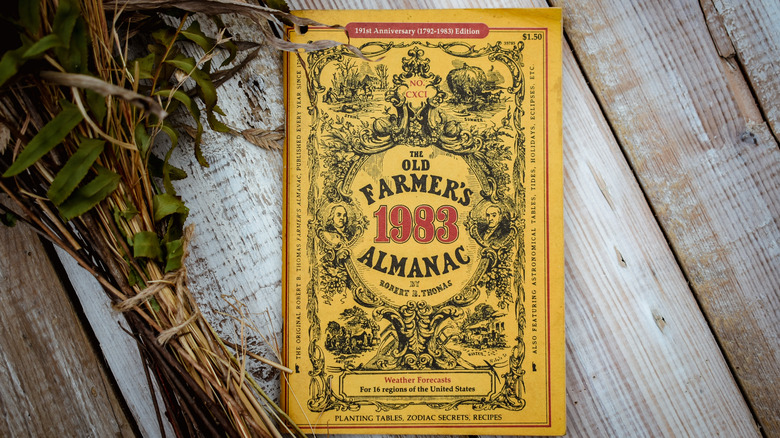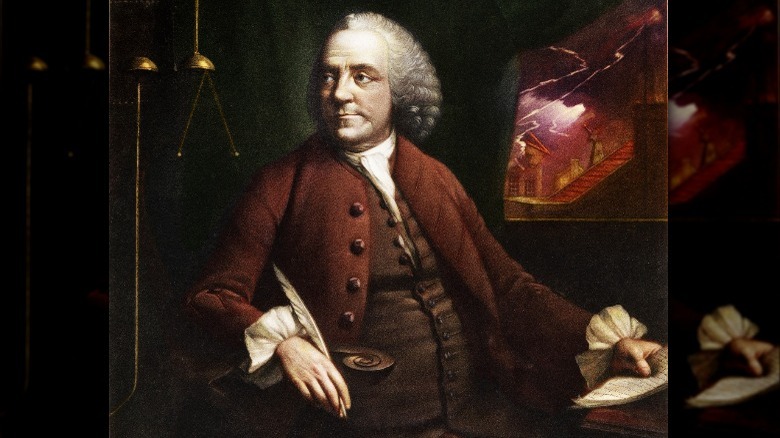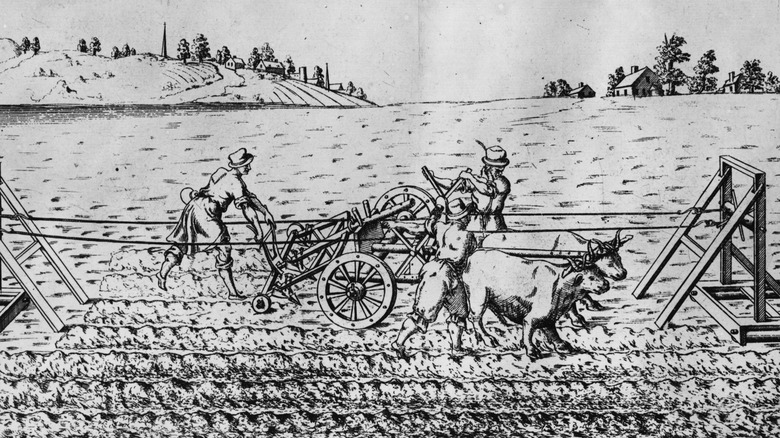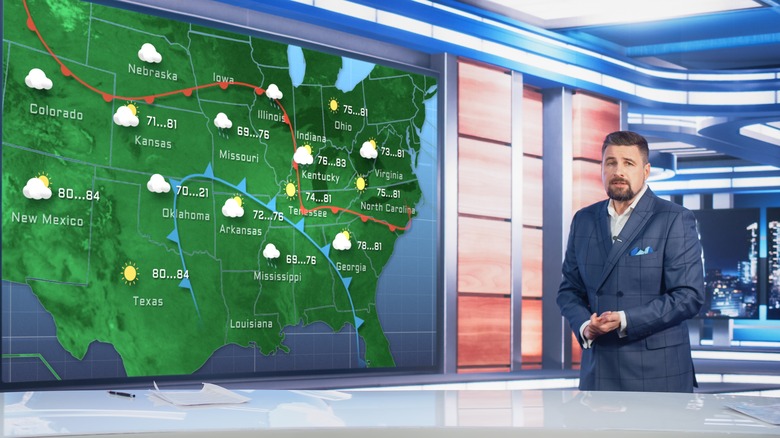How Accurate Is The Old Farmer's Almanac?
For centuries, Americans lived and died by the almanac. As The Atlantic reports, several almanacs have come and gone through the American landscape since the 1700s, but Exhibit A when it comes to American almanacs is "The Old Farmer's Almanac," which was originally just "The Farmer's Almanac."
Of course, it wasn't (and isn't) just farmers who can benefit from the information contained within, but as the title makes clear, farmers are going to need it most. Even modern farmers still live and die by climate and weather patterns; planting too early or too late, for example, could doom a crop and, by extension, the farmer's livelihood. "The Old Farmer's Almanac" seeks to predict those patterns based on a process that exists somewhere between science and folklore. Nevertheless, people buy "The Old Farmer's Almanac" every year, or else its publisher wouldn't print it, so there must be some truth to it, right?
What even is an almanac?
An almanac is a reference book that contains data about various subjects, largely depending on the context. For example, an almanac could contain tables of sports data (such as the Baseball Almanac) or entertainment data. The word "almanac" is of uncertain origin, according to the Online Etymology Dictionary, but probably came to us from Arabic, via Spanish and maybe Greek, and its root words maybe originally meant something like "the calendar."
Written volumes that are the conceptual precursor to the modern almanac date back to the 13th century, according to Tufts University. The first English-language almanac was "Kalendar of Shepards" (1497) by Richard Pynson.
However, it was in colonial New England that the almanac truly became a part of the American literary fabric. Harvard College produced the first almanac printed in America in 1646, and did so for the next three decades. In 1676, John Foster published his own. Half a century later, in 1732, Benjamin Franklin (above) published "Poor Richard's Almanack" (spelling wouldn't become standardized in the U.S. for another century), and as the Benjamin Franklin Historical Society reports, soon his was a best-seller.
Why farmers want an almanac
The type of almanac that is "The Old Farmer's Almanac" (TOFA) can be counted on to contain data about the sun, stars, and moon and their positions in the sky throughout the year, or tides, or, most importantly for "The Old Farmer's Almanac's" intended readership, the weather. Additionally, TOFA contains some random bits of this and that which may have been helpful to an 1820s farmer, or equally relevant to a 2022 reader (in particular if they're interested in folklore). For example, according to The Atlantic, TOFA contains jokes, recipes, and health cures of dubious utility, such as boiling an onion and then drinking the water to prevent a cold.
TOFA's bread and butter is probably its predictions about the weather, and for a time anyway, people across the country — not just farmers — relied on TOFA's forecasts. Anecdotal reports tell of brides consulting the almanac to schedule their weddings, for example, or well-heeled society women consulting the publishers for advice on when to schedule garden parties.
The almanac persists
So is "The Old Farmer's Almanac" necessary and relevant in 2022? The answer is a mix of yes and no. As a practical matter, the company that owns the rights still publishes it and sells it, and that says something about its staying power: If people didn't buy it, the publisher wouldn't publish it.
On the one hand, much of the content in the book — such as the positions of the stars and planets in the sky, the tides, daily sunrise and sunset times, and so on — is available for free elsewhere on the internet, as The Atlantic makes clear. However, nothing beats a handy reference where all of the information is in one easy-to-access place, and for now, a printed book still fits that bill, at least in some contexts.
Other content in TOFA is, if not necessarily unique to the volume, certainly not easy to find on the internet with a few clicks. Recipes and folk remedies, for example, are a staple of the tome, as are jokes and health advice.
How Do Almanacs Predict The Weather?
These days, weather prediction, though far from an exact science, is reasonably accurate, at least in the short term. An app on your phone can give you an accurate (more or less) weather forecast up to 14 days in advance. As the National Oceanic and Atmospheric Administration reports, scientists review all sorts of scientific data to come up with their predictions. For the long term, it's less exact, but scientists can point to some systems, such as an El Niño or La Niña system (via National Ocean Service), that can portend general trends but are not going to be able to give you a specific forecast for, say, Little Rock, on a specific date.
However, this is all a recent invention. For millennia, including the first couple of centuries of the publication of American almanacs, including TOFA, people relied on folklore: supposedly the number of acorns that fall in an autumn, for example, or the way certain animals behave could portend the long-term weather trends.
Does TOFA rely on folklore for its prognostications? It's hard to say. Discover Magazine reports that TOFA claims to use sunspot activity to predict the weather, as well as possibly actual scientific data, but that the weather-prediction methods of other almanacs, and possibly other methods used by TOFA as well, are "closely-guarded trade secrets." Do these publishers also rely on folkloric weather prediction?
But is it accurate?
How accurate is "The Old Farmer's Almanac"? When it comes to such things as the phases of the moon, the positions of the celestial bodies in the sky, sunrise and sunset times, tides, and so on, there's little to no ambiguity. The processes that govern these things have been understood for centuries, as are the models that can predict them. "The universe [is a] machine: Once you get the operating instructions, you can tell the future," says Tim Clark, executive director of The New Yorker, via The Atlantic.
When it comes to folklore-based health interventions, such as boiling an onion to prevent a cold? Maybe so, maybe no. "It has to be true — or, rather, not made up. It may be wrong, but the point is somebody believed it once," says Clark.
As far as predicting the weather? All bets are off. TOFA supposedly uses sunspot data to predict weather patterns, an idea Galileo is said to have come up with in the 1600s, and which science hasn't yet ruled out. Regardless, as Discover Magazine points out, decades of predictions from TOFA, when compared against what actually happened, reveal that the august and venerable volume is right about half of the time — effectively random chance. Further, climatologist Paul Knight of Penn State notes that many of TOFA's predictions are actually so vague as to be effectively meaningless (via Discover Magazine).





